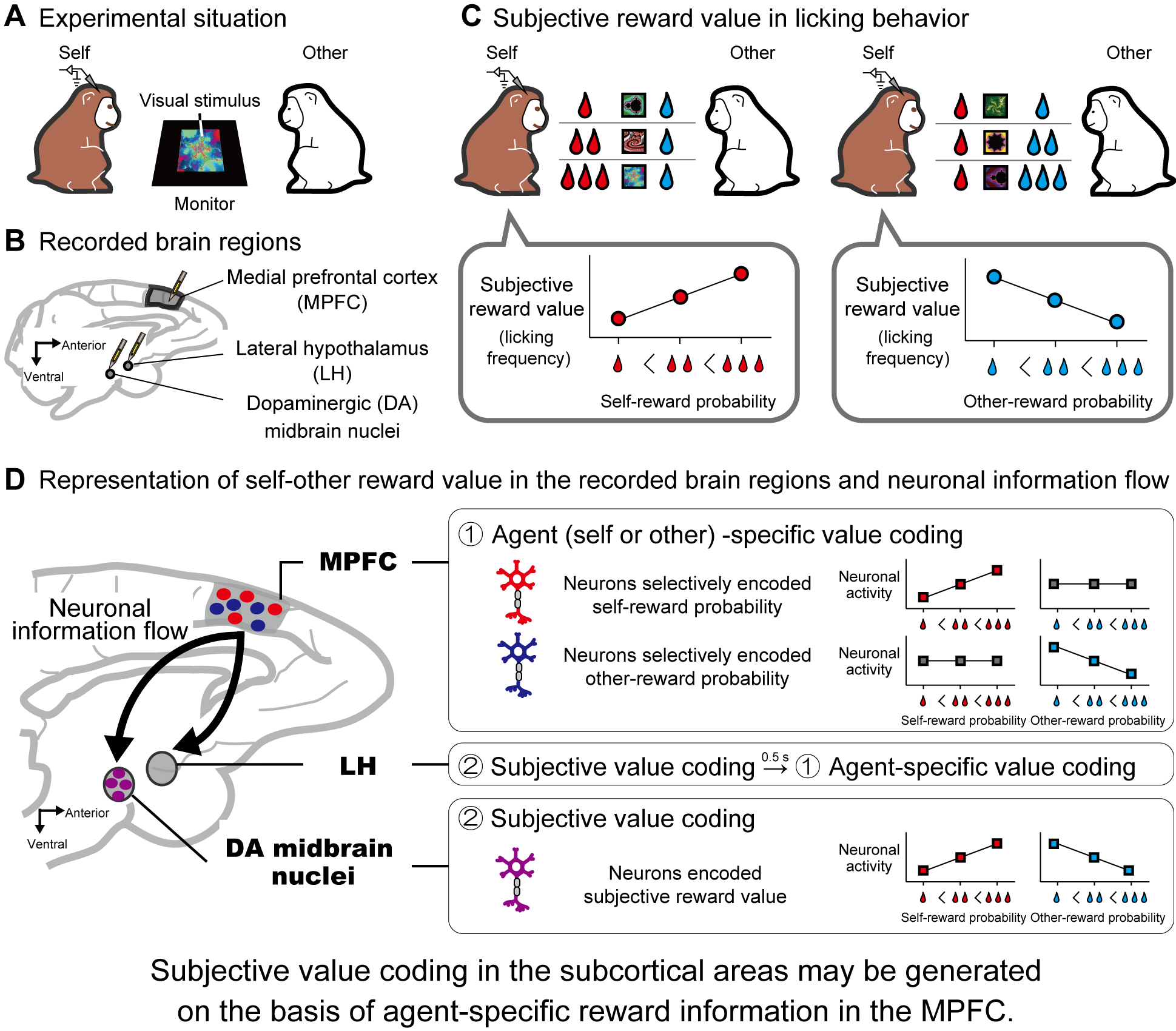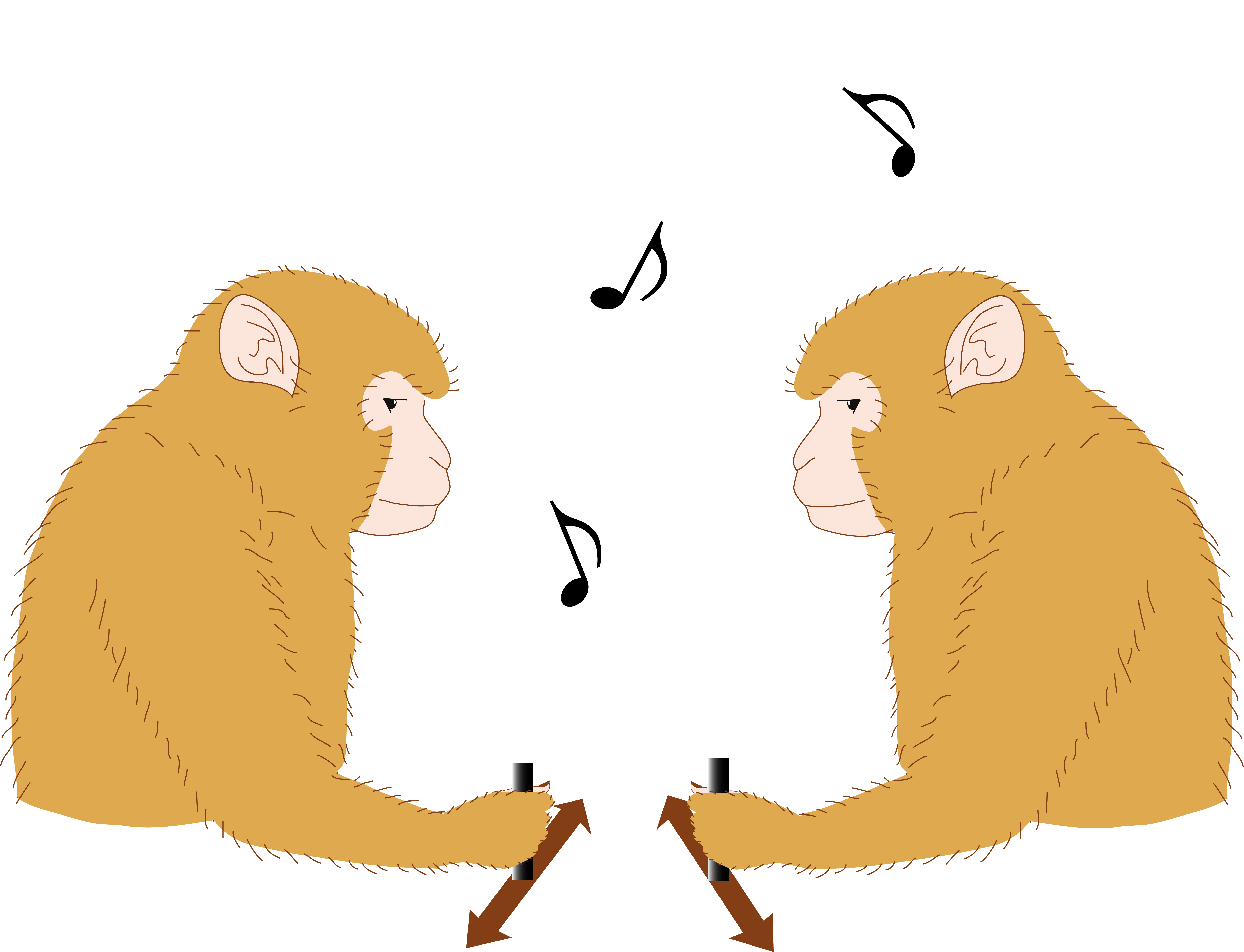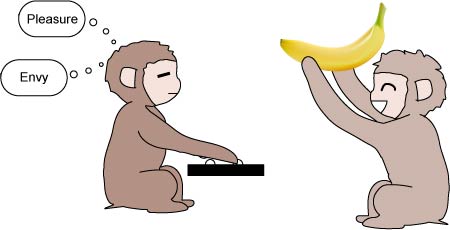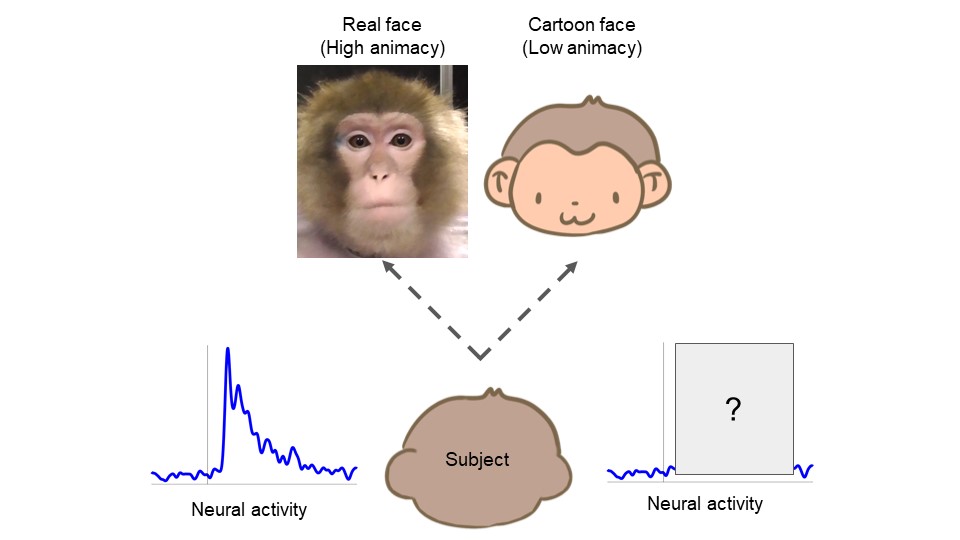社会的コンテキストにおける動作情報処理の神経機構
腹側運動前野と内側前頭前野はそれぞれミラーシステムとメンタライジングシステムのノードと考えられている。しかし、両者の機能的差異、両者の機能連関の様式、自閉スペクトラム症表現型との関連性は未解明である。本研究では対面する2頭のニホンザルに対し、他者の動作情報を参照して自己の動作を適切に選択することを要求するタスク(図1)を考案し、腹側運動前野と内側前頭前野から神経活動を同時に計測した。また、ウイルスベクターを用いて腹側運動前野から内側前頭前野に投射する神経路の活動を選択的に遮断し、タスク遂行への影響を検討した。その結果、2つの脳領域では動作主関連ニューロン(ミラーニューロン、他者ニューロン、自己ニューロン)の存在割合が異なること(図2A)、及び生物学的他者に対する選好性が異なること(図2B)を見出した。2領域の機能連関については、動作遂行時と動作観察時にデルタ帯域の同期的活動が高まること、及び他者の生物性が高いほど腹側運動前野から内側前頭前野への情報流が増加することを見出した(図2C)。さらに、当該神経路の情報流を遮断すると(図3A)、他者の動作情報に基づく自己の動作選択が障害され、その程度は他者の生物性が高いほど顕著になることを見出した(図3B)。本研究により、ミラーシステムとメンタライジングシステムをつなぐ神経回路の機能的役割が初めて明らかにされた。
Social action information
The ventral premotor cortex (PMv) and the medial prefrontal cortex (MPFC) are considered to be the nodes of mirror and mentalizing systems, respectively. However, little is known about the functional coordination between these two systems and their possible relationship with autism spectrum disorder (ASD) phenotypes. In the present study, we designed a task in which two face-to-face monkeys select their own action by observing the action of the other (Fig. 1), and measured the neural activity in the PMv and MPFC simultaneously. We found that the prevalence of agent-related neurons (i.e., mirror-type neurons, partner-type neurons, self-type neurons) and the preference for biological others were different between the two regions (Figs. 2A, B). Delta-band coherence increased during action execution and action observation, and the information flow in the PMv-to-MPFC direction increased as the other became more social (Fig. 2C). Furthermore, the blockage of information flow from the PMv to the MPFC (Fig. 3A) impaired action selection on the basis of other-action information; the degree of this impairment was greater as the others became more social (Fig. 3B). Our findings suggest that functional coordination between the PMv and MPFC plays a critical role in social action monitoring.
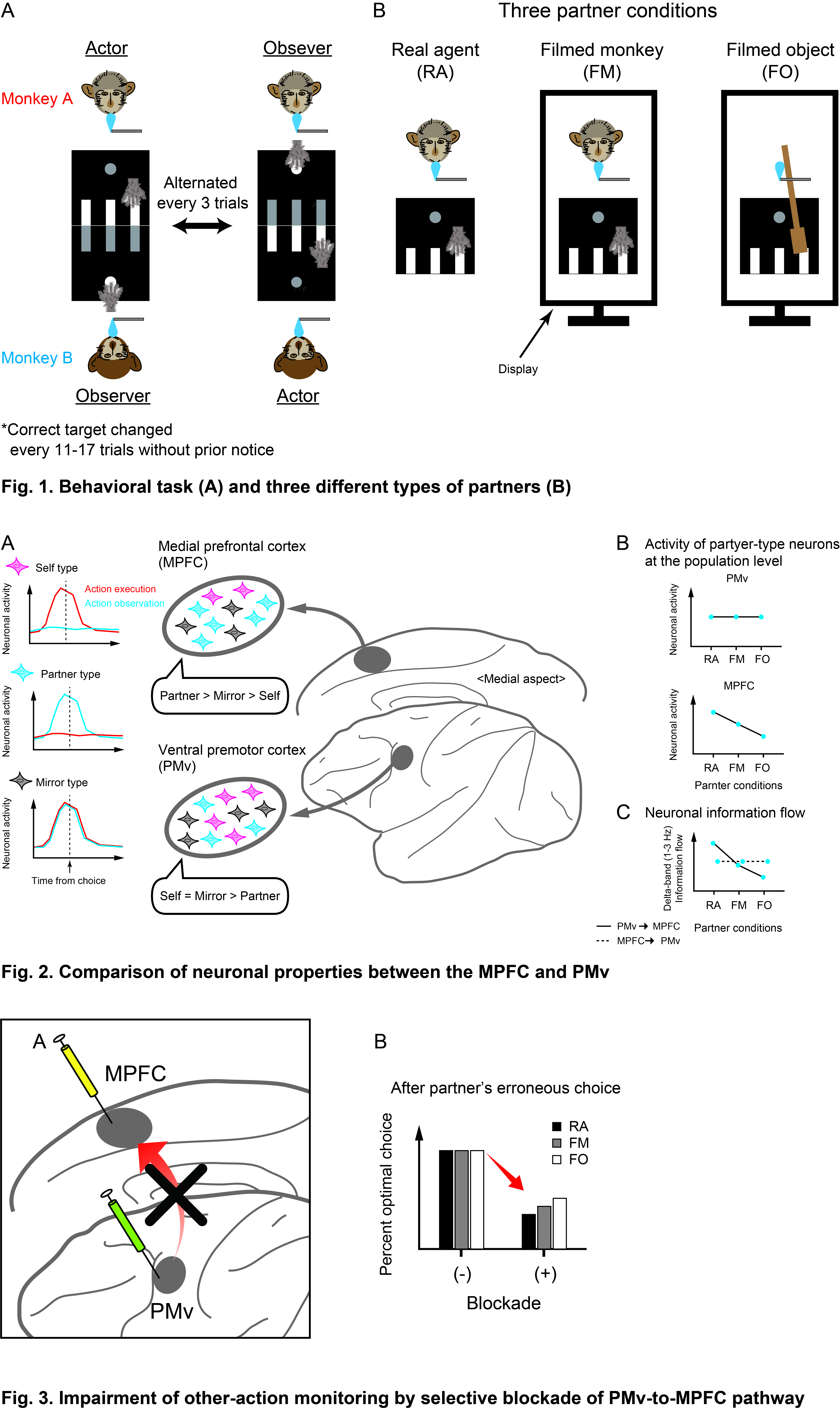
社会的コンテキストにおける報酬情報処理の神経機構
ヒトやサルなどの社会的動物は、自己の報酬に加え、他者が得る報酬に対しても関心を示す。しかし、他者の報酬情報が脳内のどの領域でどのように処理されるのかについては未解明の部分が多い。本研究では対面する2頭のニホンザルを用いて社会的コンテキストでの古典的条件づけを考案し、行動解析と電気生理学的解析を行った。社会的古典的条件づけでは,個々の条件刺激に対し自己と他者で異なる報酬確率を関連づけた。リッキング運動を指標としてサルの報酬期待を検討した結果、自己の報酬確率が同一でも他者の報酬確率が増加すると減少したことから、主観的価値を反映するものと考えられた。黒質緻密部と腹側被蓋野(ドーパミンDA作動性中脳核)、視床下部外側野(LH)、内側前頭前野(MPFC)から単一神経細胞活動を記録した。DA細胞は条件刺激提示後一過性に自己報酬の主観的価値を表現した。LH細胞は、条件刺激提示直後には自己報酬の主観的価値を表現し、その約500ms後には自己の報酬確率か他者の報酬確率かを細胞ごとに選択的に表現した。MPFC細胞は、持続的に自己の報酬確率か他者の報酬確率かを選択的に表現した。さらに3領域から同時計測した局所場電位にGranger causality解析を適用し、顕著なトップダウン信号を同定した(MPFC→DAとMPFC→LH)。大脳皮質での自他選択的な報酬情報が皮質下にて主観的価値情報に統合される可能性が考えられた。
Social reward information
Social animals including humans and monkeys show an interest in the reward they obtain, as well as in the reward others obtain. However, the regions of the brain in which other-reward information is processed remain unknown. In this study, we devised a Pavlovian conditioning procedure in social contexts using two monkeys sitting face-to-face and performed behavioral and electrophysiological analyses. In this social Pavlovian procedure, different reward probabilities for self and other were associated with different conditioned stimuli. We evaluated a subjective value of one’s own reward using licking and choice behaviors, which increased as the self-reward probability increased but decreased as the other-reward probability increased. The activity of single neurons was recorded in the substantia nigra pars compacta and the ventral tegmental area (collectively called the dopaminergic midbrain nuclei), the lateral hypothalamus (LH), and the medial prefrontal cortex (MPFC). Dopamine neurons transiently encoded the subjective reward value after onset of the conditioned stimuli. The LH neurons initially encoded the subjective reward value and then selectively encoded the self-reward probability or other-reward probability. The MPFC neurons consistently encoded the self-reward probability or other-reward probability. The Granger causality analysis revealed a significant level of information flow from the MPFC to the dopaminergic midbrain nuclei and to the LH. Our findings indicate that subjective value coding in the subcortical areas may be generated on the basis of agent-specific reward information in the MPFC.
